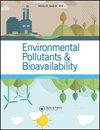Water sources of riparian plants during a rainy season in Taihu Lake Basin, China: a stable isotope study
Q3 Chemical Engineering
引用次数: 6
Abstract
Abstract In this study, we investigated water sources of three typical plant species, i.e., Ginkgo biloba (Ginkgo biloba L.), Green soybean (Glycine max (L) Merr.), and Mulberry tree (Morus alba L.) in a rainy season by using a dual stable isotope approach (δ18O and δ2H). Potential water sources were divided into direct or internal (i.e. soil water at different depths) and indirect or external water sources (i.e. precipitation, river water and groundwater). The results indicated that the surface soil water δ18O and δ2H is enriched probably due to evaporation. Ginkgo biloba and Green soybean prefer using soil water from the upper soil layer (0–60 cm) and precipitation, and the Mulberry tree mainly used deep soil water (120-150 cm) and groundwater. The different water use strategies of the three plant species are likely to be determined by their different root distribution at the above correspondent soil depths.太湖流域雨季河岸植物水源的稳定同位素研究
摘要在本研究中,我们调查了三种典型植物的水源,即银杏(Ginkgo biloba L.)、绿大豆(Glycine max(L)Merr.),利用双稳定同位素方法(δ18O和δ2H)研究了桑树(Morus alba L.)在雨季的生长。潜在水源分为直接或内部水源(即不同深度的土壤水)和间接或外部水源(即降水、河水和地下水)。结果表明,表层土壤水分δ18O和δ2H的富集可能是由于蒸发作用。银杏和绿大豆更喜欢使用上层土壤(0–60 cm)的土壤水和降水,桑树主要使用深层土壤水(120–150 cm)和地下水。三种植物的不同用水策略可能是由它们在上述相应土壤深度的不同根系分布决定的。
本文章由计算机程序翻译,如有差异,请以英文原文为准。
求助全文
约1分钟内获得全文
求助全文
来源期刊
CiteScore
1.62
自引率
0.00%
发文量
0
审稿时长
1 months
期刊介绍:
Chemical Speciation & Bioavailability ( CS&B) is a scholarly, peer-reviewed forum for insights on the chemical aspects of occurrence, distribution, transport, transformation, transfer, fate, and effects of substances in the environment and biota, and their impacts on the uptake of the substances by living organisms. Substances of interests include both beneficial and toxic ones, especially nutrients, heavy metals, persistent organic pollutants, and emerging contaminants, such as engineered nanomaterials, as well as pharmaceuticals and personal-care products as pollutants. It is the aim of this Journal to develop an international community of experienced colleagues to promote the research, discussion, review, and spread of information on chemical speciation and bioavailability, which is a topic of interest to researchers in many disciplines, including environmental, chemical, biological, food, medical, toxicology, and health sciences.
Key themes in the scope of the Journal include, but are not limited to, the following “6Ms”:
Methods for speciation analysis and the evaluation of bioavailability, especially the development, validation, and application of novel methods and techniques.
Media that sustain the processes of release, distribution, transformation, and transfer of chemical speciation; of particular interest are emerging contaminants, such as engineered nanomaterials, pharmaceuticals, and personal-care products.
Mobility of substance species in environment and biota, either spatially or temporally.
Matters that influence the chemical speciation and bioavailability, mainly environmentally relevant conditions.
Mechanisms that govern the transport, transformation, transfer, and fate of chemical speciation in the environment, and the biouptake of substances.
Models for the simulation of chemical speciation and bioavailability, and for the prediction of toxicity.
Chemical Speciation & Bioavailability is a fully open access journal. This means all submitted articles will, if accepted, be available for anyone to read, anywhere, at any time. immediately on publication. There are no charges for submission to this journal.

 求助内容:
求助内容: 应助结果提醒方式:
应助结果提醒方式:


